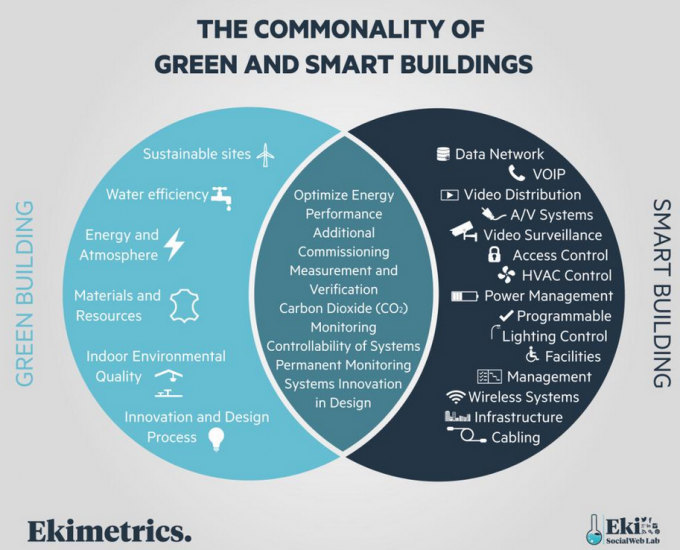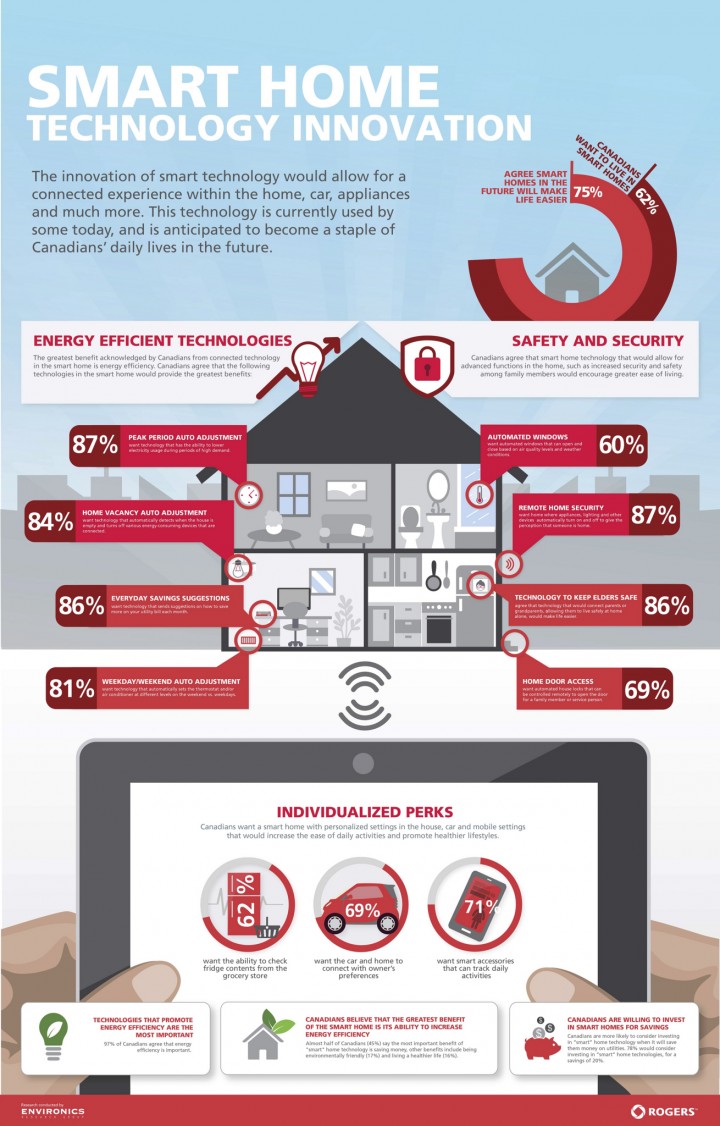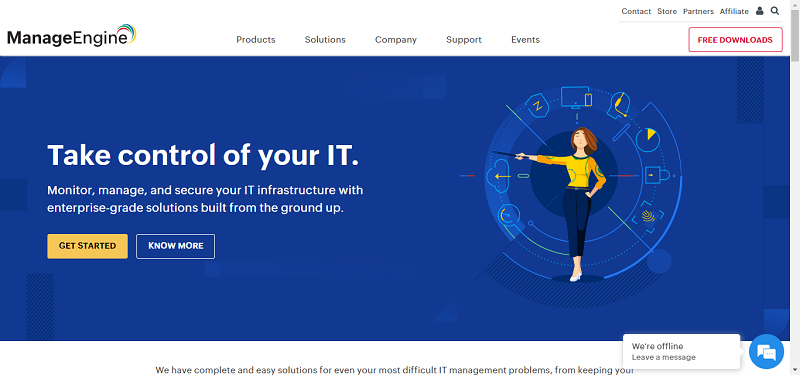While the Internet of Things has become a popular concept among tech crowds, the consumer IoT remains fragmented. Top companies continue to battle to decide who will be the epicenter of the smart home of the future, creating separate ecosystems (like the iOS and Android smartphone market) in their wake.
Google’s OnHub router works with Weave, which the tech giant recently received in its acquisition of Nest, in a clear play to become the leader in smart home technology. Apple has the Apple TV hub and the HomeKit, while Amazon has its Amazon Echo and Alexa.
Samsung acquired SmartThings, which connects Samsung appliances in the same home and will be integrated into its smart TVs, and LG just announced its own SmartThinQ hub. All of these systems work within their individual product lines, but none provide the cohesive solution that will lead to true interconnectivity.

(Image Source: Ekimetrics)
When I leave my house, I have to turn off the air conditioner with Nest, turn on the porch lights with Philips Hue, and lock the door with Lockitron. Why can’t I press one button to tell the house to go into “vacant” mode after I leave? With tech giants competing with one another to own the smart home, the consumer gets a fragmented product full of potential but without an avenue to realize it.
For startups, the problem rests with centralized business processes. Young companies don’t have a go-to platform for discovery and distribution like larger ones (think the Google Play store for Android). An IoT company needs to develop a native app for both Apple and Android, purchase retailer shelf space, advertise its device, and promote its platform. This massive barrier to entry stifles innovation for growing companies, but we know what needs to be done.
Changing the status quo starts with encouraging connectivity. The smart home of the future needs to have contextual awareness. If my security camera identifies a burglar, I want the fire alarm to activate, the lights to go off, and the door to lock behind him. When I enter the car to go to work, I want the coffee machine to heat up and the air conditioner to turn on at the office.

(Infographic Source: Rogers)
All of these things are possible through individual apps today, but without context awareness, technology fails to live up to its potential. We need interoperability. We need the IFTTT for the IoT to get everything working together.
But connectivity doesn’t mean companies should slap an Android logo on a device and say it raises the value. Both Samsung and LG tried this tactic with washing machines that connected to smartphones but received a lukewarm public reception.
Connectivity in itself isn’t enough. We need meaningful connectivity, and the only way to produce that is to identify the pain points in using our appliances and alleviate them using technology. Otherwise, we risk using technology for technology’s sake without any clear end goal in mind.
Wouldn’t it be great to get a call from the service center before your refrigerator breaks down rather than have to call in as you frantically put the milk in a cooler while mopping the floor from the melting ice? A true IoT solution makes this possible, and while we’re not there yet, some companies are on the right path.
The business that creates the best, most inclusive ecosystem first will be the winner. Google’s Weave protocol coupled with its Brillo operating system holds a lot of potential. Intel and Qualcomm are working on the hardware for potential single-source solutions. And smaller companies, such as Helium, Senseware, and Arrayent, are working to create the kind of revolutionary connectivity that would allow everything to work together.
Whether current attempts succeed or not, the uncertain state of the IoT solutions market tells us that the IoT wave is still new — with the potential for astronomical growth on the horizon.
Comparing the IoT to smartphones, we’re currently developing apps for the Nokia 3310. The IoT has yet to experience its revolutionary moment — its iPhone. Once one or two functional ecosystems emerge and we start building infrastructure for them, the possibilities for innovation will explode overnight. When everything can talk to everything else and work as a single unit, the possibilities for creative solutions become endless.
After a comprehensive IoT ecosystem finally takes hold, any kid with a computer will be able to tap into data from multiple sensors, made by different manufacturers with different protocols, and tie them together to create a meaningful experience. This reality isn’t decades away, either. Within the next few years, the IoT promises to transform our homes and lives with interconnected experiences seemingly unimaginable just 15 years ago.
How can we — especially those in the technology industry — encourage and advance these opportunities?
By being open to sharing APIs and linking to other platforms, we increase the chances of a serendipitous breakthrough. We need to give developers access to the tools and see what they can discover.
In the right environment and with the right attitude, we can finally connect all of the pieces we already have and create the cohesive solution that has so far eluded us. Will 2016 be the year smart home platforms start to converge? We sure hope so.
By Saar Yoskovitz





